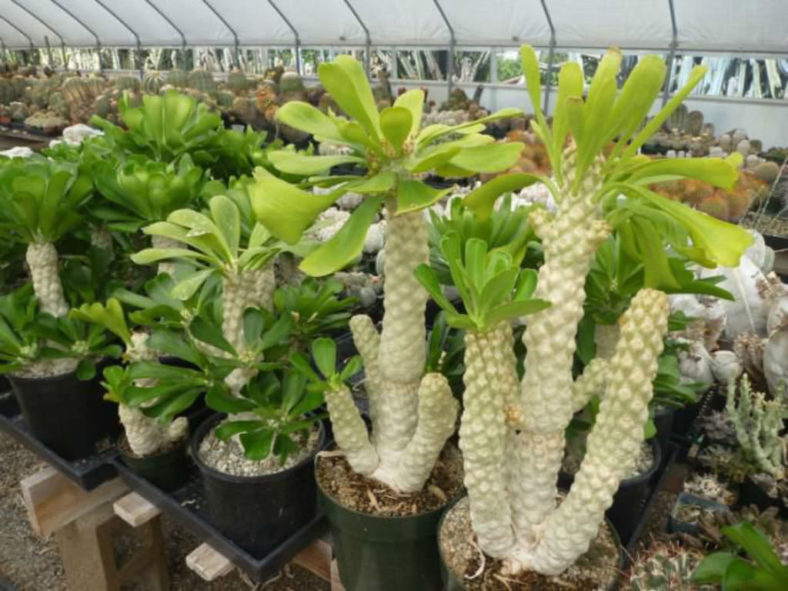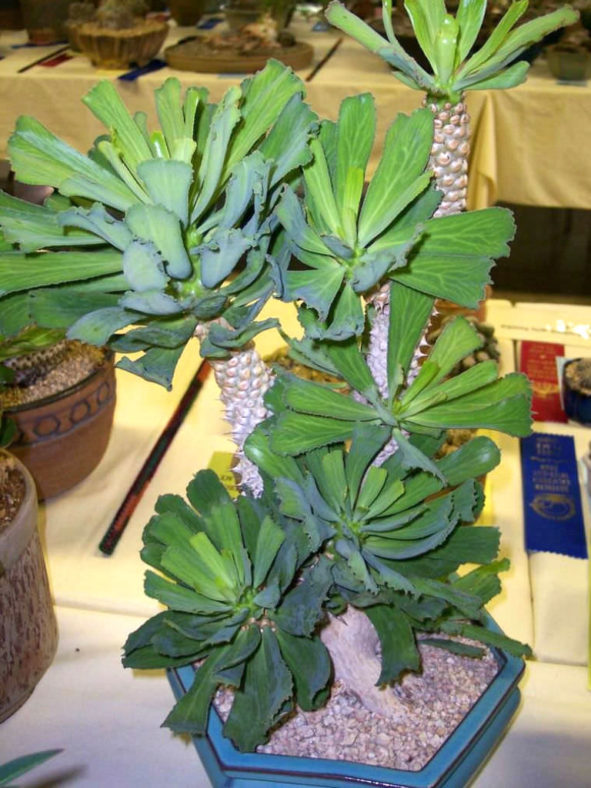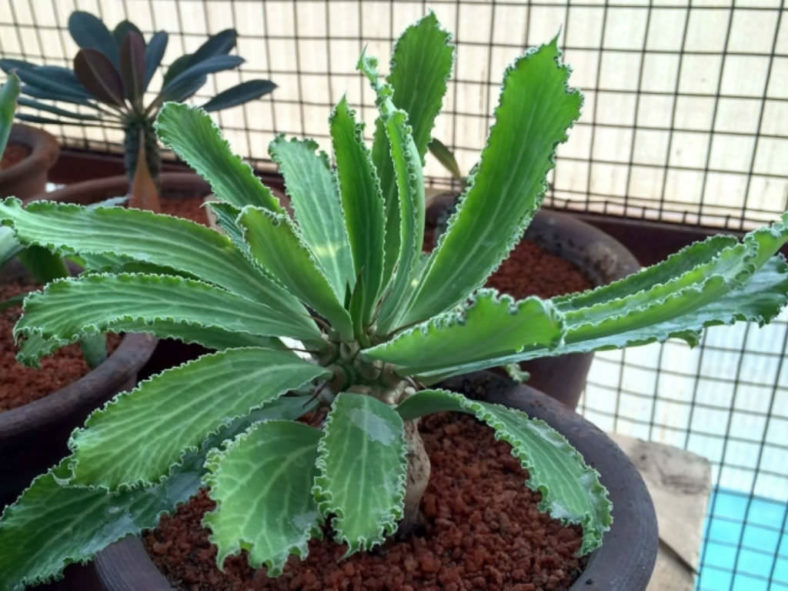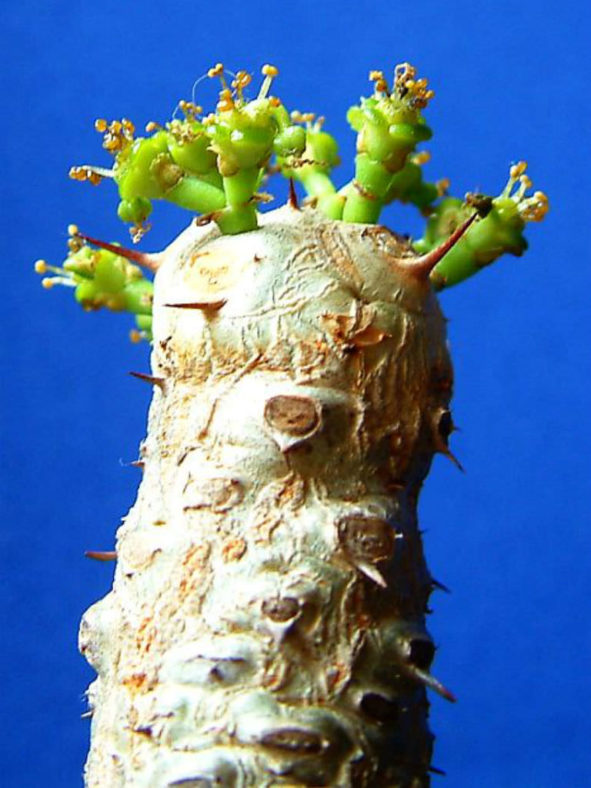Scientific Name
Euphorbia venenifica Tremaux ex Kotschy
Common Name(s)
Candle Plant, Cylindrical Euphorbia
Synonym(s)
Euphorbia venefica
Scientific Classification
Family: Euphorbiaceae
Subfamily: Euphorbioideae
Tribe: Euphorbieae
Subtribe: Euphorbiinae
Genus: Euphorbia
Origin
Euphorbia venenifica is native to Ethiopia, Chad, Sudan, and Egypt.
Description
Euphorbia venenifica is a spiny shrub-like succulent with one to several sparingly branched stems with ascending branches topped with dense clusters of large fleshy leaves during the growing season. It grows up to 16.4 feet (5 m) tall. Branches are fleshy, cylindrical, up to 1.4 inches (3.5 cm) in diameter, green to pale grey, with thick, short spines at the base of each leaf scar. Stems are up to 6 inches (15 cm) in diameter. Spine shields are obtusely triangular to subcircular, up to 0.3 inches (0.8 cm) in diameter, and spirally arranged in about eight rows. The deciduous leaves are up to 8.8 inches (22 cm) long and 1.6 inches (4 cm) wide and vary in shape from lanceolate to spatulate or obovate.
Cymes are solitary, forked once or twice, with a peduncle and cyme branches. Cyathia are about 2 inches (0.5 cm) in diameter, with cup-shaped involucres and yellowish-green glands. The plant blooms in spring (at the end of the dry season in its native habitat) before the new leaves appear.

Hardiness
USDA hardiness zone 10a to 11b: from 30 °F (−1.1 °C) to 50 °F (+10 °C).
How to Grow and Care
Euphorbias are very easy to care for. These plants require a little pampering to become established, but once they are, they are self-sufficient. In fact, more die from too much care and watering than from neglect. Euphorbias need well-draining soil and lots of sunlight. They are not particular about soil pH but cannot tolerate wet soil. Unlike most succulents, Euphorbia does not handle long periods of drought well. It may need weekly watering during the summer. Water whenever the soil is dry several inches below the surface. Water deeply, but don't let them sit in wet soil, which can cause root rot. Add some organic matter or fertilizer to the planting hole. If you are growing them in containers or your soil is poor, feed them with a half-strength fertilizer monthly.
These succulents can be grown from seed, but they can be difficult to germinate (or even find). They are usually propagated by cuttings. This can be tricky because of the exuding sap. Rooting hormone is recommended with Euphorbias. They tend to grow problem-free, but there are a few pests and diseases to be alert for.
See more at How to Grow and Care for Euphorbia.
Links
- Back to genus Euphorbia
- Succupedia: Browse succulents by Scientific Name, Common Name, Genus, Family, USDA Hardiness Zone, Origin, or cacti by Genus
Photo Gallery
Click on a photo to see a larger version.


